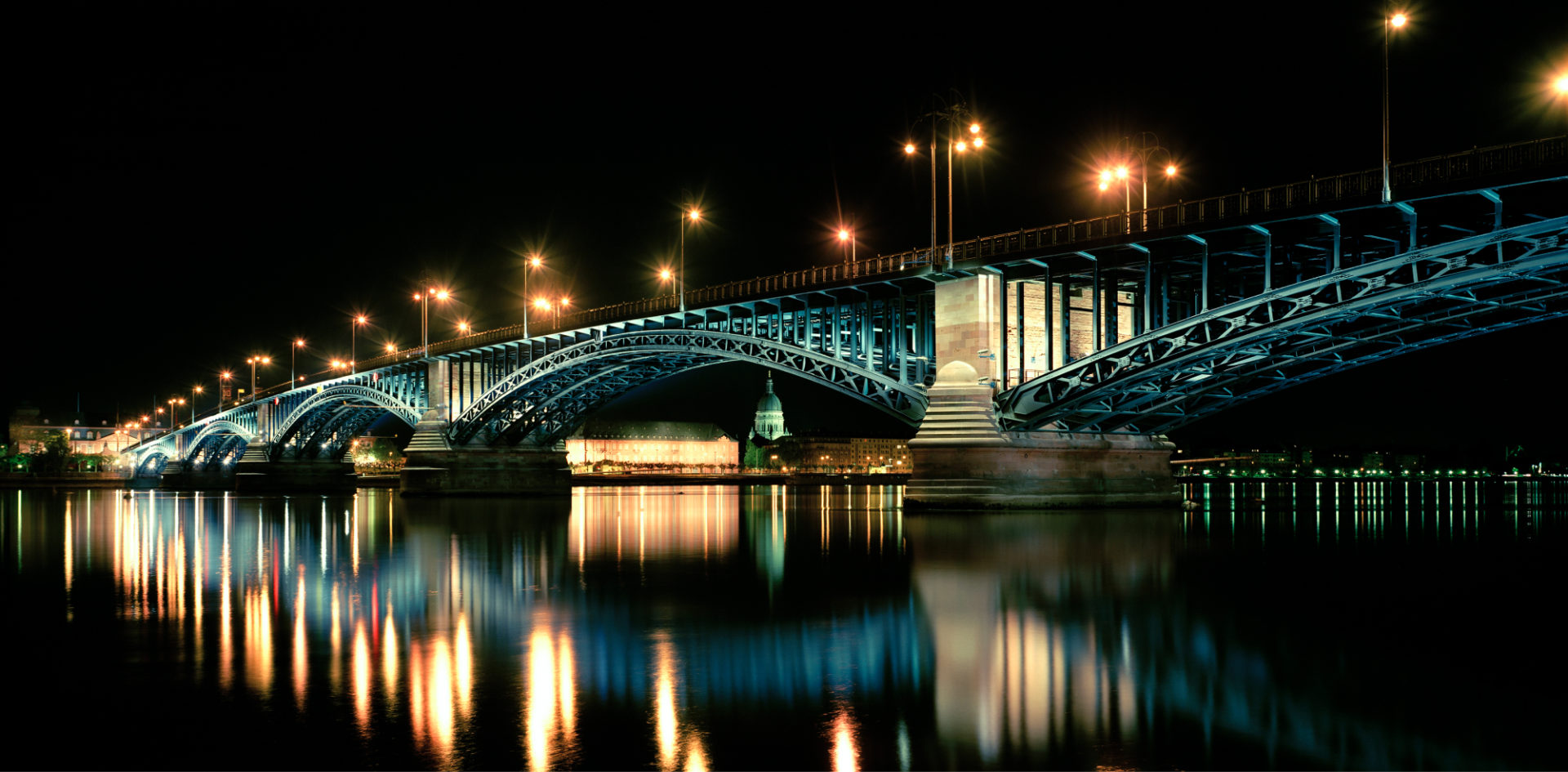
Theodor Heuss Bridge
A Historic Bridge Connects Two Cities
The Theodor Heuss Bridge was built between 1882 and 1885 as drafted by the architect Friedrich von Thiersch. The bridge structure is illuminated by lamps of a very good color rendering quality to uncover the steel structure paint’s original blue-green color composition contrasting with the red brown color gamut of the natural stone in its nocturnal view.
The lighting design’s objective was the color-true and homogenous illumination of the pillars and the landward abutment relative to the arching beams and the steel framework, thus reflecting the edifice’s day view.
For the illumination of the arcs’ bottom view, luminaires were mounted at the lower neck of the bridge pillars lighting the opposing radial segment, thus fully rendering the spatial expanse of the steel arches.
Wide beam projectors bracket-mounted above the bearing construction achieve a laminar illumination of the wide bridge flanks.
Located underneath the street lighting poles, at the pillars’ upper end, medium beam projectors have been installed to emphasize the molded current dividers. A maintenance sledge allows for uncomplicated access from the top of the bridge.
To avoid glare, all luminaires with a rotational symmetric light distribution are fitted with custom-made beveled glare shield tubes. The lighting design respects the elevated requirements of shipping traffic with regards to glare protection. Furthermore, the selection of lighting tools, their positioning and aiming is tailored to avoid light pollution near the ecologically sensitive river bank of the Rhine. The bridge’s consciously low luminance range supports the design intent to harmoniously integrate the structure’s nocturnal view into the existing illumination of the neighboring historical buildings on the river banks.
Consequently, this gentle orchestration of the bridge does justice to its historical setting without appearing exaggerated.
The mounting locations of the luminaires are selected in such a fashion that they remain inconspicuous during the day. All luminaires have been chosen from a projector family of a compact and timeless design.
The homogenous illumination of the landside abutment is provided by pole-mounted wide-beam projectors.







